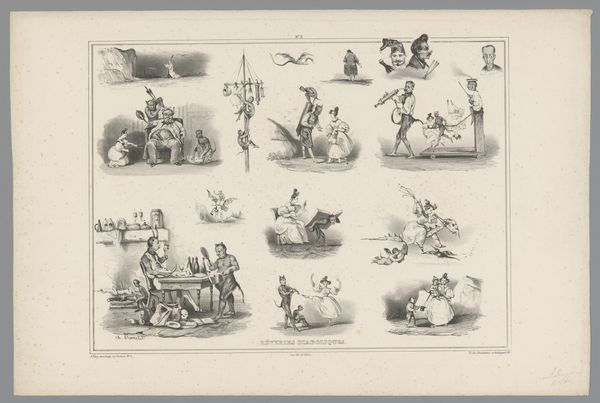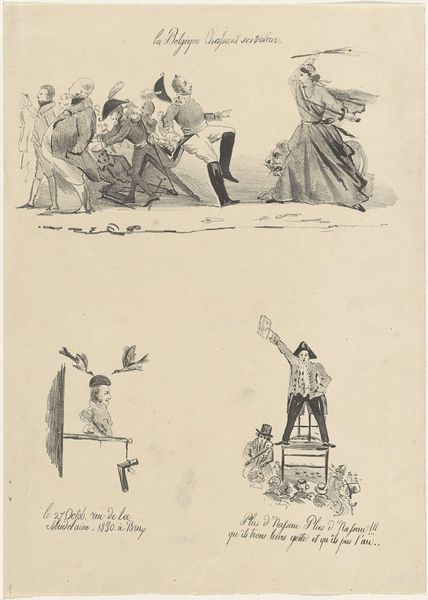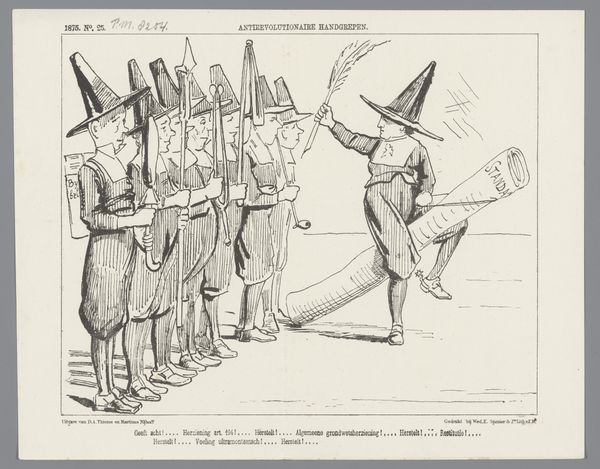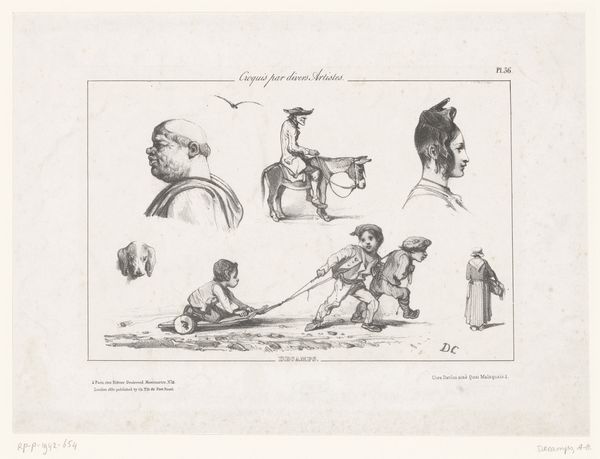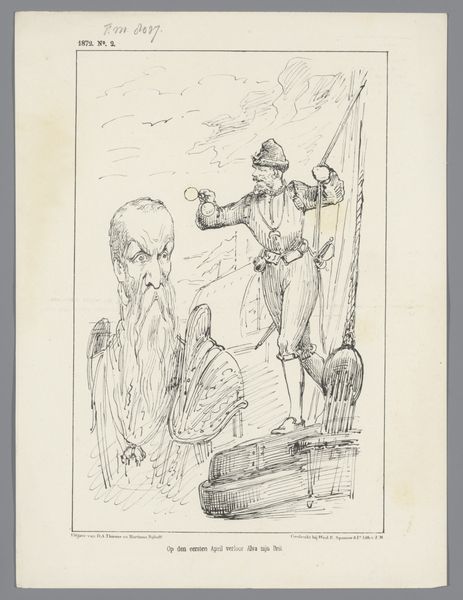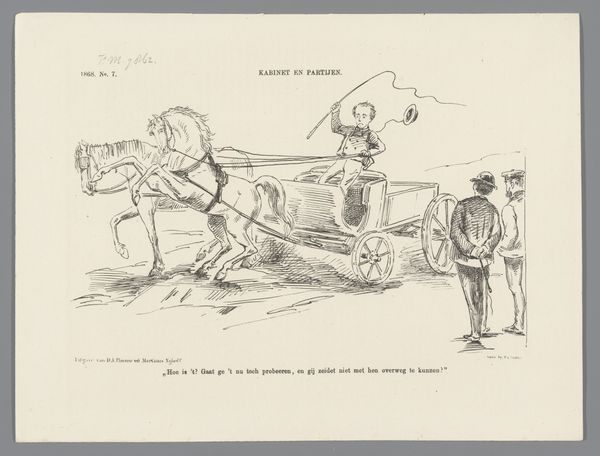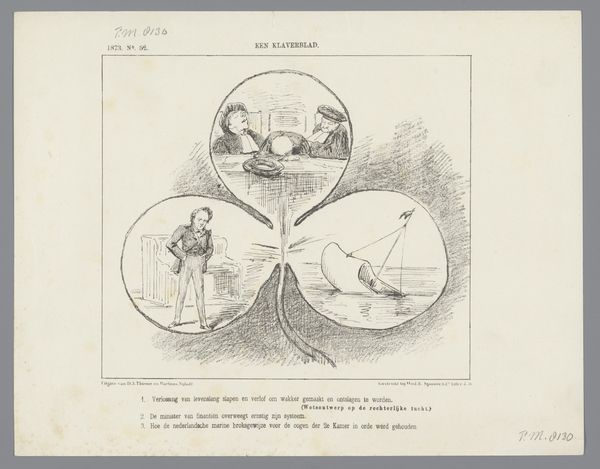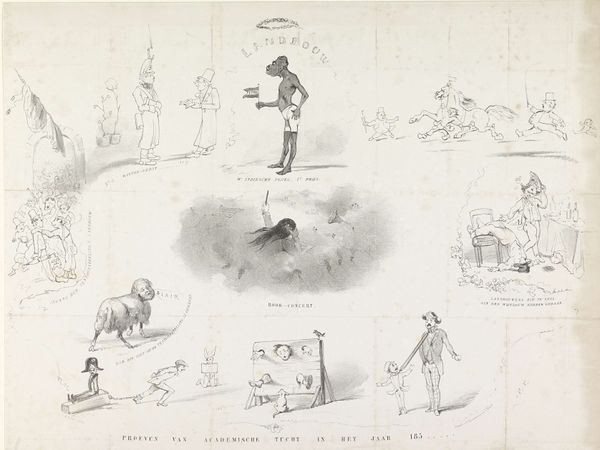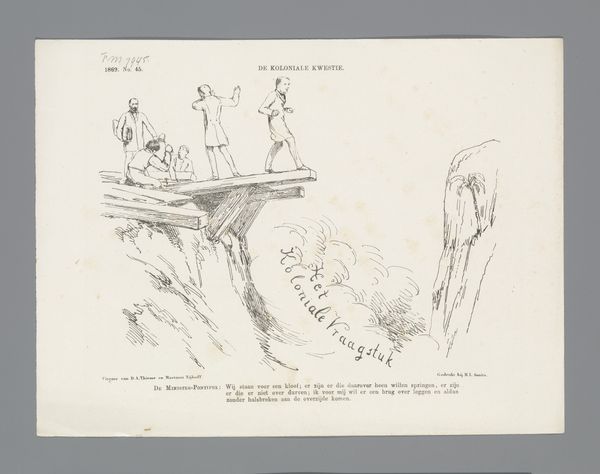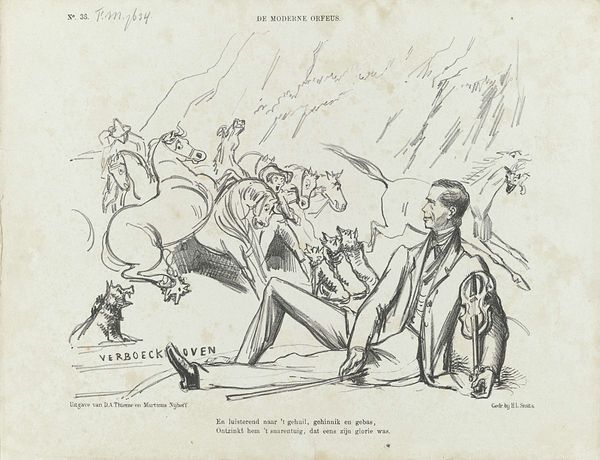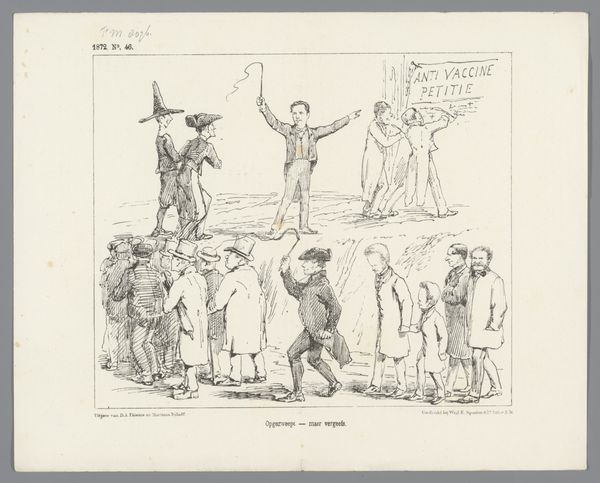
drawing, graphic-art, print, pen
#
drawing
#
graphic-art
#
16_19th-century
# print
#
caricature
#
pen
#
cityscape
#
genre-painting
Dimensions: height 215 mm, width 275 mm
Copyright: Rijks Museum: Open Domain
Curator: The graphic print before us, titled "Spotprent met minister Heemskerk," dates back to 1875 and originates from the hand of Johan Michaël Schmidt Crans. It seems to present itself as an almost theatrical panorama of political life, captured in pen, as well as other mediums. Editor: It definitely grabs attention with its chaotic energy. At first glance, I see it as a comical yet subtly cynical observation, a critical perspective articulated with the sharp precision of ink lines. Curator: Exactly! This is not just a humorous scene; it's dense with symbolism reflecting the political climate of the Netherlands in 1875. Each figure likely embodies a political party or ideology vying for control. Notice how the minister, presumably Heemskerk, seems almost overwhelmed by the animals and objects pulling him in different directions. It reflects the tensions after the elections. Editor: And the use of animals, specifically the donkey and the ox, are these stereotypical portrayals, associating these political entities with certain characteristics? I'm particularly drawn to the donkey. Curator: Undeniably. Animals in political cartoons have been symbolic for centuries, functioning as a potent and often instantly recognizable shorthand. The donkey has long symbolized the Democratic Party in the United States and has crossed over into Dutch caricatures to mock politicians considered foolish or stubborn. Likewise, the ox is not likely an accident, hinting at something plodding, maybe burdened. Editor: And what of the bare figures acting like a fulcrum on a rope? It's hard to interpret. Curator: These elements, alongside the horse and the figure in the locomotive, point towards instability. There's also the indication of industrial elements in this piece that imply there's new social territory being fought over amongst politicians who are caught, so to speak, playing childhood games to manage complex transitions of power. Editor: Seeing how these potent visual elements contribute to the social commentary really sharpens my appreciation for the artist’s perspective. It provides insight into a crucial time for art as an active participant in socio-political dialogues. Curator: It’s fascinating how art enables that critical cultural memory through images that echo, mutate, and reappear across history, as relevant now as then. Editor: A truly multi-layered work that speaks volumes about the continuing story of power, representation, and symbolic language in political narratives.
Comments
No comments
Be the first to comment and join the conversation on the ultimate creative platform.

